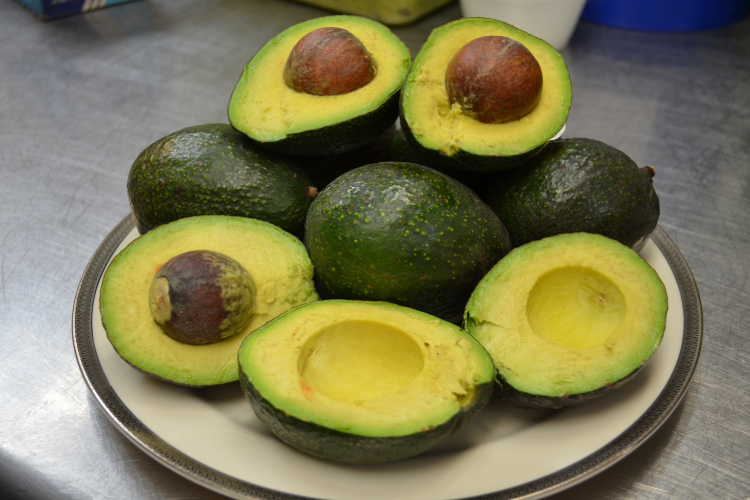Common items that quietly put pets at risk.

Dogs explore the world with their mouths, which means they often interact with foods that seem harmless to us but can cause serious harm to them. Many veterinarians report that accidental food poisoning remains one of the most frequent emergency visits, often because owners simply did not realize what their dogs had eaten. The danger hides in kitchen bowls, dropped snacks and well meaning treats shared during everyday moments.
Once people understand how these foods affect dogs, everything changes. Meals become safer, habits shift and owners move with more confidence. Each of these foods carries its own risks, and knowing them early can prevent frightening situations. As the list unfolds, the patterns behind these toxic reactions begin to make sense.
1. Grapes and raisins trigger sudden kidney distress.

The toxins in grapes and raisins can cause kidney failure in dogs, even in small amounts. The exact substance responsible remains unclear, but veterinarians widely agree that the risk is significant. Dogs may vomit shortly after eating them, followed by lethargy or reduced urination. These early signs can progress quickly, creating a medical emergency that requires immediate care.
Over the next several hours, symptoms often intensify as the kidneys struggle. The dog becomes increasingly weak and may refuse food or water. These reactions show why veterinarians warn owners so urgently about grapes and raisins, setting the tone for other foods on this list.
2. Chocolate contains compounds dogs cannot metabolize safely.

Chocolate carries theobromine and caffeine, two stimulants that dogs eliminate much more slowly than humans. Dark chocolate poses the highest risk because it contains stronger concentrations. Dogs that ingest it may begin pacing, drooling or vomiting as their heart rate increases. The severity depends on size, age and the amount consumed.
As the toxins circulate, more serious symptoms can appear. Tremors, seizures or irregular heart rhythms may develop. The experience is overwhelming for the dog and alarming for the owner, revealing how easily a common treat can turn dangerous. This toxic effect leads smoothly into the next everyday item.
3. Onions and garlic damage a dog’s red blood cells.

These ingredients contain compounds that can cause oxidative damage, leading to a type of anemia that develops gradually. Dogs may seem tired or uninterested in play as their blood cells begin breaking down. Even small amounts added to cooked meals or found in seasoning blends can create problems over time.
As the anemia progresses, their gums may pale and their breathing may quicken. The body works harder to compensate for reduced oxygen circulation, creating visible signs of distress. These subtle changes often surprise owners, especially when the food seemed mild or harmless.
4. Macadamia nuts spark neurological and digestive reactions.

Dogs that eat macadamia nuts may experience sudden weakness or trembling, particularly in their hind legs. They may also show signs of stomach upset or discomfort. The reaction can appear within hours and last for a full day, leaving the dog confused and unsteady. Even small portions can trigger noticeable effects.
As the episode continues, the dog may lie still or refuse to move much. These symptoms eventually fade, but the experience highlights how quickly an unfamiliar food can disrupt their system. The pattern reinforces the importance of keeping nuts out of reach.
5. Xylitol creates rapid drops in blood sugar levels.

This common sugar substitute appears in gum, baked goods and even some peanut butter brands. When a dog ingests xylitol, insulin is released at dangerous levels, causing a sharp decline in blood sugar. The dog may stagger, drool or collapse shortly after eating it. The reaction can escalate within minutes, making it one of the most dangerous hidden toxins.
As the body struggles to stabilize, the liver can become damaged as well. This combination of low blood sugar and organ strain makes xylitol uniquely harmful. Owners who learn this early understand why checking labels becomes essential.
6. Alcohol exposure leads to severe neurological symptoms.

Dogs absorb alcohol differently than humans and experience its effects far more intensely. Even small amounts found in spilled drinks or raw dough can cause depression of the central nervous system. The dog may begin wobbling or acting disoriented as the substance spreads through their body. Vomiting and low body temperature often follow.
Over time the symptoms deepen, creating difficulty breathing or responding to touch. The experience reveals how deceptively dangerous household drinks can be for pets. This awareness highlights the importance of securing food and beverages during gatherings.
7. Caffeine consumption disrupts a dog’s heart and nerves.

Coffee grounds, energy drinks and certain medications contain enough caffeine to push a dog into a state of overstimulation. Their heart rate rises and they may pant or become restless. The heightened state can lead to muscle tremors or digestive upset as the body tries to expel the toxin.
If the exposure is significant, seizures or cardiac issues may occur. These reactions emphasize how sensitive dogs are to stimulant compounds. Owners who recognize early signs can seek help quickly, reducing the severity of the episode.
8. Dough containing yeast expands dangerously inside the stomach.

Raw dough can rise after ingestion, creating painful pressure in a dog’s stomach. As the dough expands, it can reduce blood flow and trap gas, leading to bloating. Dogs may whine, pace or stretch repeatedly in an attempt to relieve discomfort. The expanding mass can also produce alcohol, adding a second layer of risk.
As the swelling continues, breathing becomes labored and the dog may attempt to vomit without success. This emergency requires immediate care to remove the fermenting dough. The situation underscores how everyday baking materials can turn hazardous fast.
9. Certain fruit pits contain natural toxins harmful to dogs.

Pits from peaches, plums and cherries contain substances that release cyanide when chewed or digested. Dogs that crack these pits may experience nausea, trouble breathing or confusion. The large size of the pit also increases the risk of intestinal blockage, creating two problems at once.
As the toxin enters the bloodstream, symptoms intensify. The dog may show bright red gums or signs of dizziness. These reactions reveal why discarding pits securely is essential for households with curious pets.
10. Avocado flesh and skin can upset sensitive dogs.

While some dogs tolerate small amounts, others react poorly to the compounds in avocado. The fruit can cause vomiting or digestive irritation, especially when eaten in larger portions. The pit carries additional risks as both a choking hazard and a potential blockage if swallowed.
As the discomfort builds, the dog may become lethargic or avoid food temporarily. These reactions show how varied canine responses can be depending on size and health. Owners often learn quickly that certain foods simply are not worth the risk.
11. Dairy products overwhelm many dogs with sensitive stomachs.

Many dogs lack the enzymes needed to process lactose effectively. Milk, cheese or ice cream can trigger bloating, diarrhea or gas shortly after consumption. The reaction may appear mild at first but becomes more pronounced with repeated exposure. Dogs may also show signs of skin irritation if dairy affects their immune system.
Over time these digestive disturbances create discomfort that can disrupt daily routines. The pattern encourages owners to choose safer alternatives and limit shared treats to options designed for canine digestion.
12. Salt heavy foods push a dog’s body into imbalance.

Chips, cured meats and seasoned snacks contain enough salt to cause dehydration or sodium toxicity in dogs. They may become excessively thirsty, restless or nauseated after eating salty items. The body begins working overtime to correct the imbalance, creating visible signs of strain.
As the sodium level rises, more severe symptoms such as tremors or seizures can appear. These moments highlight how easily a handful of snacks can overwhelm a dog’s system. Understanding this final item ties the entire list together, reminding owners why veterinarians stress the importance of knowing common kitchen dangers before accidents occur.
